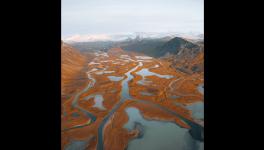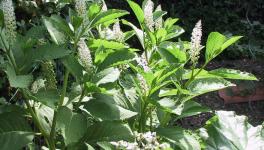Bengaluru’s Last Remaining Grasslands to Make Way for Film City
Image Source: Change.org
New Delhi: In what could result in the destruction of the last remaining open spaces in Bengaluru city, the Bharatiya Janata Party (BJP)-led Karnataka government is going full steam with a plan to construct a Film City over the Hesaraghatta grasslands.
The Karnataka State Wildlife Board rejected a proposal last week to declare the grasslands as a conservation reserve, thereby paving the way for developing the Film City.
The grasslands, located around 25 kms to the northwest of Karnataka Vidhan Soudha in Bengaluru, surround the artificial Hesaraghatta Lake, which was once the only source of drinking water for the city. It has been alleged that the ecological value of the grasslands is being deliberately overlooked by the Karnataka government by categorizing it as a wasteland.
“Grasslands are a unique ecosystem. Grasslands support diverse flora and fauna and offer varied ecosystem services. They should not be confused with wastelands. It would be a travesty by the government to allow commercialisation of the area without considering the immense biodiversity this area supports,” said Dr S Subramanya, Ornithologist and a former faculty member at the University of Agricultural Sciences, Bengaluru.
On January 20, a proposal by the Karnataka Forest Department to declare an area of around 5,000 acres surrounding the lake bed as ‘Greater Hesaraghatta Grassland Conservation Reserve’ was rejected.
“The Hesaraghatta Lake was constructed probably in the year 1532. All potable water requirements for Bengaluru city used to be met out of the reservoir till the year 1994. However, the water flow and water-holding capacity of the lake gradually reduced owing to developmental activities around its catchment area and the watershed. Subsequently, the lakebed turned into a natural grassland over the years. Today, it remains as one of the last remaining natural grassland and a vast lung space on the outskirts of Bengaluru,” added Dr Subramanya.
As per reports, the Karnataka government plans to develop the Film City over a 150-acre parcel of the grasslands. Locals and activists allege no biodiversity assessment study was ever conducted by the state government before deciding to divert a portion of the grasslands, which serve as an important carbon sink of Bengaluru, for commercial purposes.
A detailed paper submitted by environmental activists to the Karnataka Forest Department in December 2013, had listed the presence of hundreds of species of flora and fauna, including plants, mammals, reptiles, amphibians, birds, spiders, butterflies and even the Indian leopard in the grasslands. The activists had demanded the area to be declared as a conservation reserve under Section 36A of the Wildlife (Protection) Act, 1986.
“The government is exploiting the area for its real estate value owing to the land's proximity to Bengaluru city and notwithstanding the ecological significance it has for the local population," said Bengaluru-based photographer and wildlife activist Mahesh Bhat. He added, "Nearly four decades ago, there had been a proposal to develop a film city over a parcel of the grasslands which belongs to the state Animal Husbandry Department. The Karnataka High Court had issued a status quo upon it six years ago."
In 1972, the Karnataka state government had leased out 347.12 acres of land, which belonged to the Department of Animal Husbandry and Fisheries, to the Mysuru Film Development Corporation for a Film City. But, following the winding up of this quasi-judicial organization, the land was temporarily vested with the public sector Kanteerava Film Studio of Karnataka.
In 2012, the state government floated tenders inviting expressions of interest for developing a Film City over the grasslands, which was opposed by locals. A PIL was filed in the Karnataka High Court by a conservation group, the Arkavathi Kumudvathi Nadi Punaschetana Samithi, demanding conservation of the grasslands. The state government replied to the PIL, however, in a peculiar manner saying that the final utilization of the land has not yet been decided upon.
“In the peculiar facts and circumstances, learned Additional Advocate General has submitted that the State Government was considering at the highest level the contentions and issues raised in the present petition and have not made up their mind about proper utilization of the lands in question,” observed a division bench of the high court comprising the then Chief Justice DH Waghela and Justice Ram Mohan Reddy in the final verdict issued in January 2015.
A status quo, first imposed by the high court in 2013 following the filing of the PIL, was extended through the final verdict while giving liberty upon the petitioners to approach a court of law as and when the state government decided upon a final course of action for utilisation of the grasslands.
Also, in April 2012, the then Principal Secretary in the Department of Animal Husbandry and Fisheries, V Manjula, had written to the Chief Secretary of Karnataka demanding the land back to the department since it was never put to the original use for which it had been leased out. The department also advised the government against the proposal for commercial development of the grasslands. A number of non-polluting activities, including livestock breeding, duck breeding, and poultry and fisheries research are being carried out in the area by various central and state government agencies.
“Apart from the threat of commercial development, the grasslands have had other traditional threats too. In the past, photographers drove through the area causing destruction to the grasslands. This has been restricted. Then, Bengaluru Development Authority planted saplings in the grasslands, which were ultimately uprooted. It has been warned in the past that a bio-hazard might result in case the grasslands are destructed through mindless activities,” said another Bengaluru-based conservationist.
In the recent past, there have been reports of illegal sand mining too from the bed of the dried-up Hesaraghatta Lake. It is alleged that sand miners find easy access to the area since it is not protected under law by the forest department.
When asked by NewsClick whether any alternate plan has been worked out to protect the biodiversity of the grasslands since the proposal to declare it as a conservation reserve has been shelved, Karnataka’s Principal Chief Conservator of Forests (Wild Life), Ajai Mishra, said: “We might work out a plan for this.”
Conservationists also fear an increase in the number of man-animal conflicts in Bengaluru if the grasslands are put to commercial use depriving wildlife of their habitat. Leopard attacks have been frequently reported in and around Bengaluru in the recent past, corresponding with the rapid decline in green spaces vis-à-vis the hyper-urbanisation of the city in the past three decades.
“The proposal to declare the Hesaraghatta grasslands as a conservation reserve was mooted by the Karnataka forest department. Certain concerns were raised by the department of animal husbandry and veterinary sciences about it. The State Wildlife Board did not favour the proposal to declare it as a conservation reserve,” added Mishra.
The writer is an independent journalist.
Get the latest reports & analysis with people's perspective on Protests, movements & deep analytical videos, discussions of the current affairs in your Telegram app. Subscribe to NewsClick's Telegram channel & get Real-Time updates on stories, as they get published on our website.
























